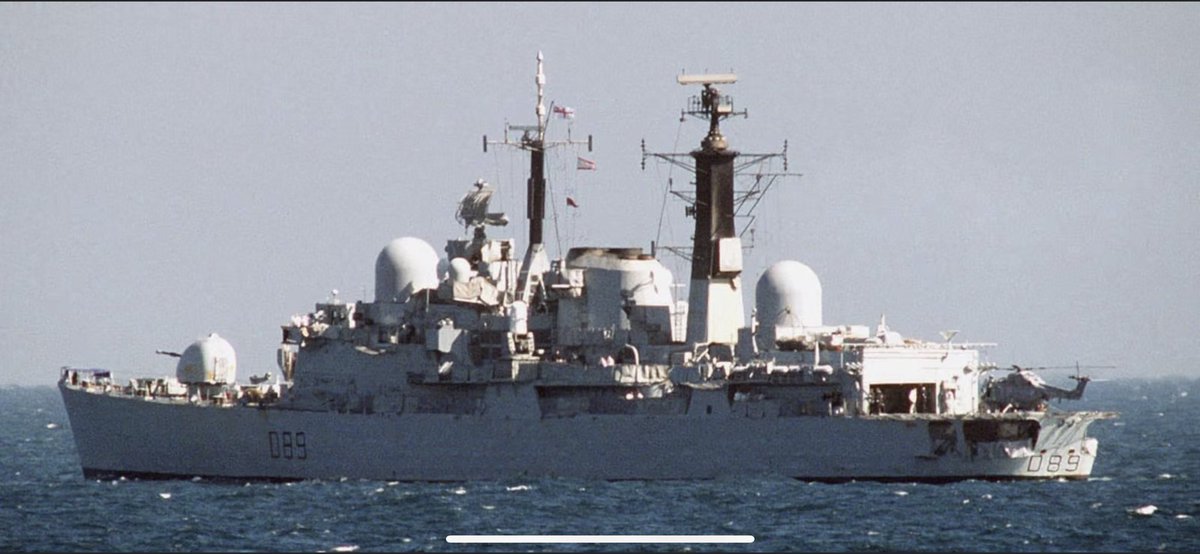
#Onthisday1991 #gulfwar30
Today thirty years ago we had completed a swept lane transit through the minefield, followed by Wisconsin, Princeton, Tripoli and Jarrett as seen in this picture.
At about 0450 hrs USS Tripoli ran onto an Iraqi mine missed by the sweepers. 1/6
Today thirty years ago we had completed a swept lane transit through the minefield, followed by Wisconsin, Princeton, Tripoli and Jarrett as seen in this picture.
At about 0450 hrs USS Tripoli ran onto an Iraqi mine missed by the sweepers. 1/6

The blast created a hole sixteen by twenty five feet, flooded a pump space, dry stores compartment and auxiliary engine room. Fractured firemain flooded a magazine, with further shock damage throughout the ship. She remained immobilised for most of the day as allied ships 2/6 

cleared the area round her, finding further mines and marking them with smoke canisters. There were no fatalities and the mine was believed to be an ex-soviet moored type.
As damage repair continued, to our north twenty eight nautical miles off Failaka Island at 0715 hr, 3/6
As damage repair continued, to our north twenty eight nautical miles off Failaka Island at 0715 hr, 3/6
two Italian-made MN103 Manta bottom-mounted influence mines detonated beneath the cruiser USS Ticonderoga, one just under the port rudder and the other just forward of the starboard bow, the second explosion most likely being a sympathetic detonation caused by the first.
Damage included hull buckling, a locked starboard shaft and rudder, and shock damage throughout the ship. HMS Exeter assumed the duties of AAWC for the group as the Canadian destroyer HMCS Athabaskan moved through the mine field to assist. 4/6
All ships subsequently remained stationary as US and UK mine hunters re-swept the boxes and safe transit lanes we were using. 5/6
That was Dom Antcliff’s #GulfWar #diary from HMS Exeter. ⚓️🇬🇧
@OnthisdayRN @NavyLookout @UKDefJournal @WarshipsIFR
@OnthisdayRN @NavyLookout @UKDefJournal @WarshipsIFR
• • •
Missing some Tweet in this thread? You can try to
force a refresh












